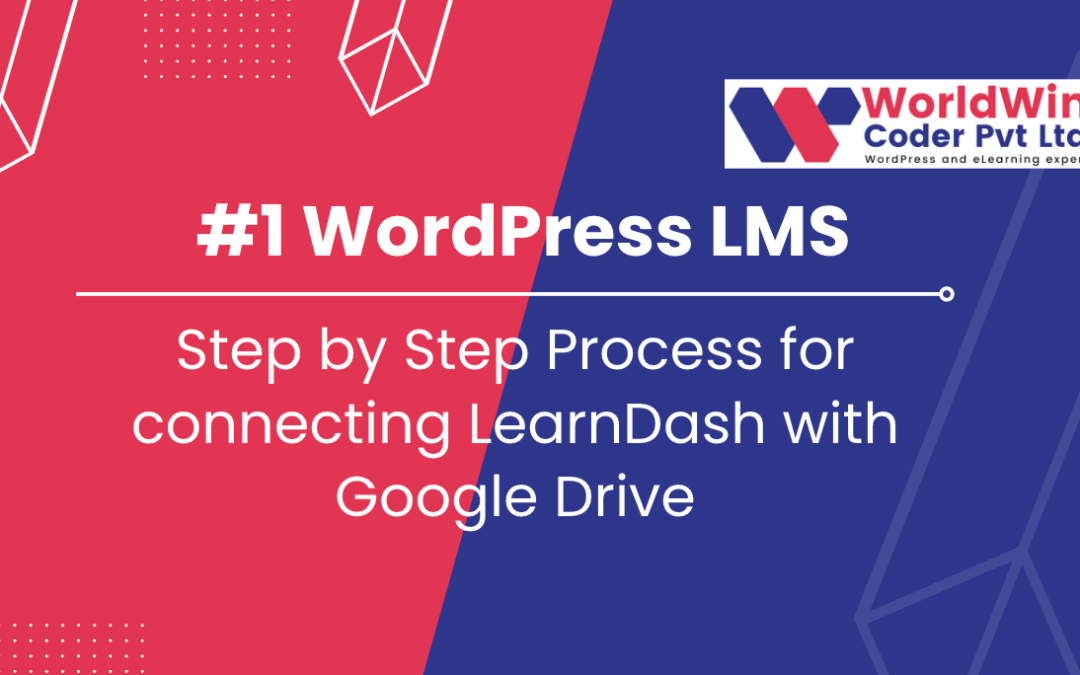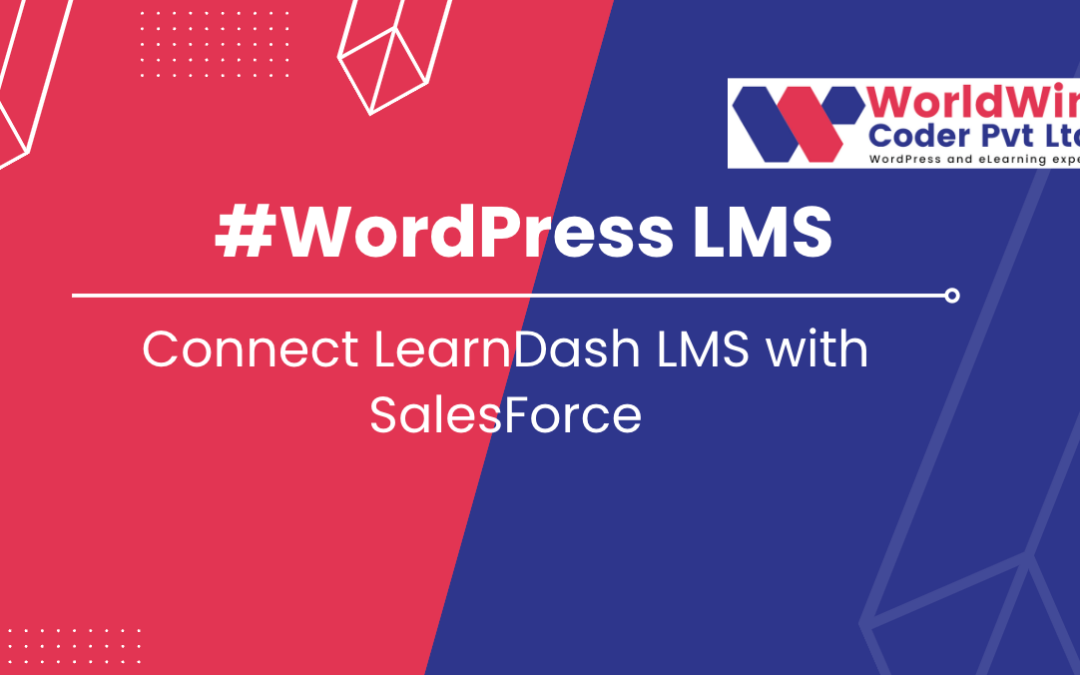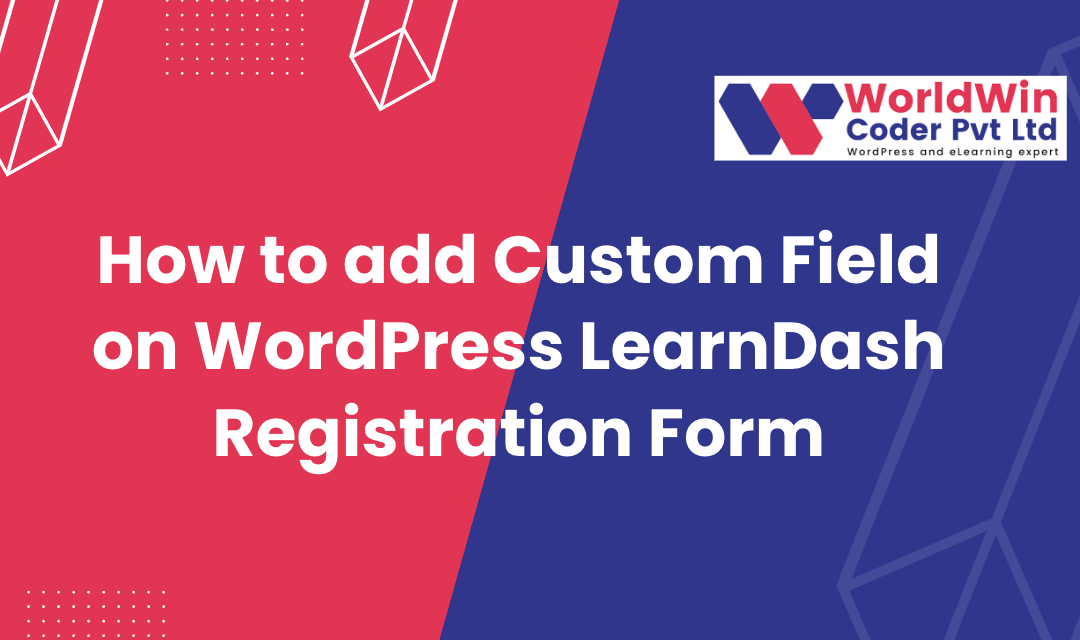
by Vishavjeet | Feb 11, 2023 | blog, WordPress
The “Connecting LearnDash with Google Drive: Step by Step Guide” provides a comprehensive and easy-to-follow explanation of how to connect LearnDash, a popular online course platform, with Google Drive, a popular cloud storage service. The guide is designed for those who are new to both LearnDash and Google Drive and aims to help them understand the process of integrating the two platforms. The guide covers the following key steps in detail: creating a Google account, enabling the Google Drive API, creating a service account, granting permissions to your service account, downloading the private key, installing the Google Drive API plugin, connecting the plugin with your Google account, and integrating LearnDash with Google Drive. The guide provides clear and concise instructions for each step, making the process of connecting LearnDash with Google Drive simple and straightforward for users of all technical abilities.
Here is a step-by-step process for connecting LearnDash with Google Drive:
- Log in to your Google account: If you already have a Google account, log in. If not, create a new account.
- Go to the Google Drive API page: Open your browser and go to the Google Developers Console at https://console.developers.google.com/.
- Create a new project: Once you are logged in, click on the “Select a project” button in the top right corner of the screen, and then click on the “New Project” button. Give your project a name, select your organization if you belong to one, and click “Create.”
- Enable the Google Drive API: Go to the “APIs & Services” page, click on the “Library” tab and search for “Google Drive API.” Click on the API and then click the “Enable” button.
- Create a service account: From the “APIs & Services” page, click on the “Credentials” tab and click on the “Create credentials” button. Choose “Service account” and then click the “Create” button. Give your service account a name, and then click “Create” again.
- Grant permissions to your service account: To grant your service account access to Google Drive, you’ll need to share a folder with the service account’s email address. Go to your Google Drive, create a new folder, and then share it with the email address of your service account.
- Download the private key: From the “APIs & Services” page, click on the “Credentials” tab, find your service account, and then click on the “Download” button to download the private key as a JSON file.
- Install and activate the Google Drive API plugin: In your WordPress dashboard, go to “Plugins,” click on the “Add New” button, and search for “Google Drive API.” Install and activate the plugin.
- Connect the plugin with your Google account: Go to “Settings” and then “Google Drive API,” and then click on the “Connect” button. Upload the JSON file that you downloaded in step 7, and then click on the “Connect” button.
- Integrate LearnDash with Google Drive: Go to the “LearnDash” settings page, and then click on the “Integrations” tab. Find the “Google Drive” integration and then click on the “Connect” button. Enter the name of the folder you shared in step 6, and then click the “Connect” button.
Now that you have successfully connected LearnDash with Google Drive, you can use Google Drive to store and manage your course files and materials.

by Vishavjeet | Feb 11, 2023 | blog, WordPress
Connect LearnDash with Salesforce: A Step-by-Step Guide
LearnDash and Salesforce are two popular platforms in their respective fields – LearnDash is a learning management system used to deliver online courses and training programs, while Salesforce is a customer relationship management (CRM) tool. Integrating these two platforms can bring many benefits, such as sharing data, streamlining processes, and automating tasks. The process of connect LearnDash LMS with Salesforce involves several steps, including setting up a Salesforce account, installing the Salesforce Connector plugin, mapping data fields, configuring the integration, testing the integration, and going live. Once the integration is set up, it’s important to maintain it by regularly checking that it’s working as expected and making any necessary updates or changes.
- Understanding the integration: The first step in connecting LearnDash and Salesforce is to understand the purpose of the integration and what benefits it provides. Salesforce is a CRM tool used for managing customer relationships, while LearnDash is a learning management system used to deliver online courses and training programs. Integrating the two platforms will allow you to share data between the two systems, streamline processes, and automate tasks.
- Setting up a Salesforce account: If you don’t already have a Salesforce account, you will need to set one up in order to connect it to LearnDash. This will involve choosing a plan that suits your needs and signing up for an account.
- Installing the Salesforce Connector: The Salesforce Connector is a plugin that allows you to integrate LearnDash with Salesforce. You can download and install the plugin from the WordPress repository or from the website of the plugin developer.
- Connecting LearnDash and Salesforce: After you have installed the Salesforce Connector, you will need to connect LearnDash LMS and Salesforce by entering your Salesforce login credentials into the plugin settings. You can access these settings by going to the WordPress dashboard and navigating to “Settings” and then “Salesforce Connector”.
- Mapping data fields: The next step is to map the data fields between LearnDash and Salesforce. This means that you will need to choose which data from LearnDash will be sent to Salesforce and how it will be organized in Salesforce.
- Configuring the integration: Once you have mapped the data fields, you can configure the integration by setting up the rules and triggers for the data transfer between the two platforms. For example, you can choose to send course completion data from LearnDash to Salesforce whenever a user completes a course.
- Testing the integration: Before going live with the integration, it’s important to test it thoroughly to ensure that it’s working as expected. This means checking that the data transfer between the two platforms is working correctly and that the data is being organized in Salesforce as desired.
- Going live: After you have tested the integration and everything is working as expected, you can go live with the integration and start using it to streamline your processes and automate tasks.
- Maintaining the integration: Finally, it’s important to maintain the integration by regularly checking that it’s working as expected and making any necessary updates or changes. This will help ensure that the integration continues to provide benefits and improve your workflow.

by Vishavjeet | Jan 14, 2023 | blog, WordPress
LearnDash is a popular WordPress plugin that allows you to create and manage online courses. One of the features of LearnDash is the ability to add custom fields to the registration form. Custom fields allow you to collect additional information from your users during registration, such as their phone number or company name. LearnDash is a highly favored WordPress plugin that provides you with the facility to concoct and govern online courses. Among its multitude of traits, one such characteristic is the provision of adding personalized fields to the registration form. Customizable fields procure the opportunity to amass supplementary information from clients during the registration process, such as their contact number or organization title. This allows businesses to gather important data that can be used for targeted marketing campaigns or to better understand their customer base. Customizable fields also provide a more personalized registration experience for customers, as they can input information that is relevant to them.
By allowing clients to input their own information, customizable fields also reduce errors and ensure that the information collected is accurate. Additionally, businesses can use customizable fields to collect feedback from customers or to provide additional customization options, such as preferred payment methods or shipping options.
Overall, customizable fields provide a valuable tool for businesses to gather information, improve their marketing efforts, and provide a better user experience for their customers.
Here is a step-by-step guide on how to add custom fields to the LearnDash registration form:
function my_ld_custom_fields() {
// Create a new custom field : Name
$custom_fields[] = array(
'name' => 'your_name',
'label' => 'Your Name',
'type' => 'text',
'required' => true
);
// Create a new custom field : phone_number
$custom_fields[] = array(
'name' => 'phone_number',
'label' => 'Phone Number',
'type' => 'text',
'required' => true
);
// Create a new custom field : Website Details
$custom_fields[] = array(
'name' => 'website_details',
'label' => 'Website Details',
'type' => 'text',
'required' => true
);
// Create a new custom field : Education
$custom_fields[] = array(
'name' => 'education',
'label' => 'Education',
'type' => 'text',
'required' => true
);
return $custom_fields;
}
add_filter( 'learndash_registration_custom_fields', 'my_ld_custom_fields' );
What’s your Biggest LearnDash Challenge Right Now?
Let’s Talk



